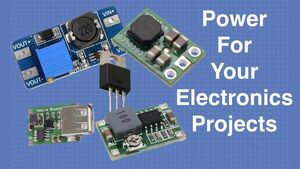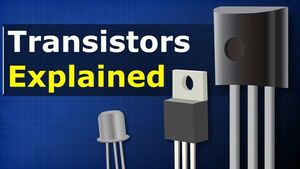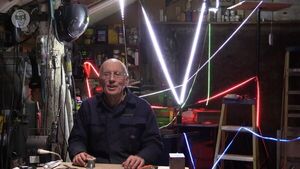2021-03-11 - Nº 306
Editorial
Esta é a Newsletter Nº 306 que se apresenta com o mesmo formato que as anteriores. Se gostar da Newsletter partilhe-a!
Todas as Newsletters encontram-se indexadas no link.
Esta Newsletter tem os seguintes tópicos:
Faz hoje anos que nascia, em 1811, o astrónomo francês Urbain Le Verrier. Ele previu por meios matemáticos a existência do planeta Neptuno. Independentemente de Adams, Le Verrier calculou a posição de Neptuno a partir de irregularidades na órbita de Úrano. Como disse Camille Flammarion, ele descobriu um planeta com a ponta de sua caneta, sem nenhum instrumento além da força dos seus cálculos. Em 1856, o astrónomo alemão Johan G. Galle descobriu Netuno depois de apenas uma hora de busca, a um grau da posição que tinha sido calculada por Le Verrier, que lhe pediu para procurá-lo ali. Deste modo, Le Verrier deu a confirmação mais notável da teoria da gravitação proposta por Newton.
Faz também hoje anos que nascia, em 1822, o quimico e geologista francês Henri Étienne Sainte-Claire Deville. Foi ele que iniciou a primeira produção industrial de alumínio. A sua carreira começou com pesquisas de terebintina. Em 1849, ao voltar-se para a química inorgânica, ele sintetizou o pentóxido de nitrogénio. Friedrich Woehler isolou o alumínio usando potássio caro, como uma curiosidade de laboratório. Em 1854, Deville fez alumínio, a partir de cloreto de alumínio e sódio menos caro. Em 1860, ele estava a produzir alumínio numa fábrica em Javel, Paris, e mais tarde em Nanterre. O metal era mais caro que o ouro até Charles Hall inventar o processo electrolítico barato. Deville também estudou a platina e outros minerais. Como geólogo, ele visitou os locais costeiros do Vesúvio e Stromboli. Ele propôs que as erupções vulcânicas ocorriam quando a água do mar entrava nas fissuras da crosta terrestre, onde o contacto com as rochas quentes produzia as erupções explosivas.
Faz igualmente hoje anos que nascia, em 1822, o matemático e educador francês Joseph Bertrand. Ele é lembrado pelas suas aplicações elegantes de equações diferenciais à mecânica analítica, particularmente em termodinâmica, e pelo seu trabalho sobre probabilidade estatística e a teoria das curvas e superfícies. Em 1845, Bertrand conjecturou que existe pelo menos um primo entre n e (2n-2) para cada n>3, como provado cinco anos depois por Chebyshev. Em 1855, ele traduziu para o francês o trabalho de Gauss sobre a teoria dos erros e o método dos mínimos quadrados. Ele escreveu uma série de notas sobre a redução dos dados das observações.
Faz também hoje anos que nascia, em 1915, o cientista da computação norte-americano J.C.R. Licklider. Ele criou a ideia de uma rede universal de computadores para transferir e recuperar facilmente informações que os seus sucessores desenvolveram e criaram a Internet. Em 1959, no seu primeiro livro, Libraries of the Future, Licklider expandiu a ideia de Vannevar Bush de um sistema automatizado de biblioteca para descrever como os computadores poderiam distribuir recursos de biblioteca de uma única base de dados para vários utilizadores remotos. Em 1962, quando era director do Escritório de Técnicas de Processamento de Informações da Agência de Projectos de Pesquisa Avançada do Departamento de Defesa dos EUA (DARPA), ele enviou um memorando a colegas prevendo uma rede de computadores de time-sharing. Posteriormente foi construída a ARPANET, que se tornou o modelo para a Internet. Ele também foi um visionário da interacção humano-computador, lembrado por seu artigo de 1960, 'Man-Computer Symbiosis.
Por fim, faz hoje anos que nascia, em 1920, o físico holandês-americano Nicolaas Bloembergen. Ele partilhou (com Arthur L. Schawlow dos Estados Unidos e Kai M. Siegbahn da Suécia) o Prémio Nobel de Física de 1981 pelos seus estudos espectroscópicos revolucionários da interacção da radiação electromagnética com a matéria. Bloembergen fez um uso pioneiro de lasers nessas investigações e desenvolveu bombas de três níveis usadas em masers e lasers.
Nesta semana que passou o rover Perseverance que se encontra numa missão em Marte, realizou a sua primeira viagem em Marte, cobrindo 6,5 metros em toda a paisagem marciana. Esta viagem serviu como um teste de mobilidade que marca apenas um dos muitos marcos à medida que os membros da equipa verificam e calibram cada sistema, subsistema e instrumentos no Perseverance. Assim que o rover começar a seguir os seus objectivos científicos, são esperados deslocações regulares de 200 metros ou mais.
Na Newsletter desta semana apresentamos diversas noticias, artigos científicos, projetos de maker assim como alguns videos interessantes. É apresentada a revista newelectronics de 9 de Março e o livro "An Introduction to Ray Tracing".
 João Alves ([email protected])
João Alves ([email protected])
O conteúdo da Newsletter encontra-se sob a licença  Creative Commons Attribution-NonCommercial-ShareAlike 4.0 International License.
Creative Commons Attribution-NonCommercial-ShareAlike 4.0 International License.
Novidades da Semana

NASA’s Perseverance Drives on Mars’ Terrain for First Time
"The first trek of the agency’s largest, most advanced rover yet on the Red Planet marks a major milestone before science operations get under way. NASA’s Mars 2020 Perseverance rover performed its first drive on Mars March 4, covering 21.3 feet (6.5 meters) across the Martian landscape. The drive served as a mobility test that marks just one of many milestones as team members check out and calibrate every system, subsystem, and instrument on Perseverance. Once the rover begins pursuing its science goals, regular commutes extending 656 feet (200 meters) or more are expected. “When it comes to wheeled vehicles on other planets, there are few first-time events that measure up in significance to that of the first drive,” said Anais Zarifian, Mars 2020 Perseverance rover mobility test bed engineer at NASA’s Jet Propulsion Laboratory in Southern California. “This was our first chance to ‘kick the tires’ and take Perseverance out for a spin." [...]
Outras Notícias

AEC-Q100 Qualified and Defense-grade PolarFire FPGAs Now Available in Volume Production
"Expanded product offering with robust device certification and characterization gives customers programmable logic solutions ideal for thermally challenging environments Automotive, defense, aerospace and industrial designers who need automotive- and defense-grade programmable logic solutions can now order PolarFire® Field Programmable Gate Arrays (FPGAs) in volume production quantities. Microchip Technology (Nasdaq: MCHP) today announced it is shipping PolarFire FPGAs qualified for both the Automotive Electronics Council Q100 (AEC-Q100) specification Grade T2 (-40°C to 125°C TJ) and military temperature grade (-40°C to 125°C TJ). These offerings extend Microchip’s low-power leadership as a supplier of FPGAs for diverse high-reliability markets. With their thermal and space design constraints, automotive, industrial and military applications deployed in harsh environments require solutions that offer power and space efficiency as well as cryptographic security. PolarFire FPGAs offer on-chip security features that enable secure communication, an encrypted bitstream, and a cryptographically secured supply chain, ensuring tamper-proof solutions for these market segments. Unlike SRAM-based FPGAs, Microchip devices can operate without fans and in some cases without heatsinks, simplifying the thermal design of the system and creating new opportunities for smaller, lighter designs." [...]

Toshiba Releases 650V Super Junction Power MOSFETs in TOLL Package that Help Improve Efficiency of High Current Equipment
"Toshiba Electronic Devices & Storage Corporation ("Toshiba") has launched 650V super junction power MOSFETs, TK065U65Z, TK090U65Z, TK110U65Z, TK155U65Z and TK190U65Z, in its DTMOSVI series that are housed in a TOLL (TO-leadless) package. Volume production shipments start today. TOLL is a surface-mount package that has an approximately 27% smaller footprint than the usual D2PAK package. It is also a 4-pin type package that allows Kelvin connection of its signal source terminal for the gate drive. This can reduce the influence by the inductance of the source wire in the package to bring out the high-speed switching performance of the MOSFETs, suppressing oscillation when switching. Compared to Toshiba’s current product, TK090N65Z, the turn-on switching loss is reduced by about 68% and turn-off switching loss by about 56%." [...]
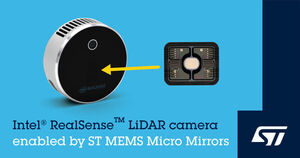
World’s Smallest Micro-Mirror Scanning Technology from STMicroelectronics Chosen for Intel® RealSense™ High-Resolution LiDAR Depth Camera L515
"STMicroelectronics (NYSE: STM), a global semiconductor leader serving customers across the spectrum of electronics applications, has developed a tiny MEMS mirror with Intel enabling spatial scanning of an environment. Intel developed a LiDAR system based on this micro-mirror, providing high-resolution scanning for industrial applications such as robotic arms for bin picking, volumetric measurements, logistics, and 3D scanning. Built into the Intel RealSense LiDAR1 Camera L515, the small dimensions of the ST micro-mirror contribute to the LiDAR camera’s hockey-puck size (61mm diameter x 26mm height). The micro-mirror enables continuous laser scanning across the entire field of view. In combination with a custom photodiode sensor, the RealSense LiDAR Camera L515 renders a 3D depth map of the entire scene. “With 30 frames per second and a field-of-view of 70° by 55°, ST’s 2nd-generation micro-mirror continues to set the bar for 3D scanning and detection applications,” said Benedetto Vigna, President Analog, MEMS and Sensors Group, STMicroelectronics." [...]

Renesas Extends IoT Security Leadership With PSA Certified Level 2 and SESIP Certification for RA Family Devices
"RA Family of 32-bit Arm Cortex-M Microcontrollers Offers Ultimate IoT Security with Renesas’s Secure Crypto Engine and Arm TrustZone Renesas Electronics Corporation (TSE:6723), a premier supplier of advanced semiconductor solutions, today announced both PSA Certified Level 2 and Security Evaluation Standard for IoT Platforms (SESIP) certifications for its RA Family of 32-bit Arm® Cortex®-M microcontrollers (MCUs). Renesas’ RA6M4 MCU Group devices with the Flexible Software Package (FSP) have been PSA Level 2 certified, expanding on the PSA Certified Level 1 achieved by RA4 and RA6 Series MCUs. Renesas’ RA6M3, RA6M4, and RA4M2 MCU groups have achieved SESIP1 certification with Physical and Logical Attacker certifications. In addition to these widely recognized industry certifications, Renesas RA MCUs offer customers the ultimate IoT security by combining Secure Crypto Engine IP with NIST CAVP certifications on top of Arm TrustZone® for Armv8-M. RA Family devices incorporate hardware-based security features from simple AES acceleration to fully-integrated crypto subsystems isolated within the MCU. The Secure Crypto Engine provides symmetric and asymmetric encryption and decryption, hash functions, true random number generation (TRNG), and advanced key handling, including key generation and MCU-unique key wrapping. An access management circuit shuts down the crypto engine if the correct access protocol is not followed, and dedicated RAM ensures that plaintext keys are never exposed to any CPU or peripheral bus." [...]
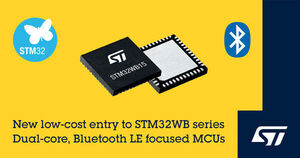
New STM32WB Wireless Microcontrollers from STMicroelectronics Deliver Affordable Convenience and Performance
"STMicroelectronics has extended its STM32WB* Bluetooth® LE microcontroller (MCU) offering with new devices that combine entry-level features with extra power savings for longer-lasting performance. The dual-core STM32WB15 and STM32WB10 Value Line pair an Arm® Cortex®-M4 processor to run the main application and a Cortex-M0+ to handle Bluetooth 5.2 connectivity, ensuring real-time performance from each. The radio stage has a 102dBm link budget to ensure reliable connections over long distances and integrates balun circuitry to save board space and reduce the bill of materials. With a new ultra-power-saving mode that allows the radio to remain operational, and carefully tailored peripherals and memory, the new devices are suited to cost-sensitive, power-conscious embedded applications including wearables, beacons, smart circuit breakers, trackers, IoT endpoints, and equipment for industrial automation. The Software Development Kit (SDK) for each MCU includes standardized radio protocol stacks and openness to proprietary protocols with a set of security mechanisms that ensure safe software updates for brand protection and device integrity, with Proprietary Code Read-Out Protection (PCROP) to guard intellectual property. With these new devices, the STM32WB series scales across package variants, offering options including extended GPIOs and pin-to-pin compatibility between similar packages of the portfolio." [...]

Sony to Release Large Format CMOS Image Sensor with Global Shutter Function and Industry’s Highest Effective Pixel Count of 127.68 Megapixels
"Delivering Increased Pixel Count, High-Speed Imaging Performance, and Contributing to Solutions in the Field of Advanced, Diversified Industrial Equipment Sony Corporation announced today the upcoming release of a large format 56.73mm diagonal CMOS image sensor "IMX661" for industrial equipment with a global shutter function and the industry's highest effective pixel count of 127.68 megapixels. This product features an increased pixel count that yields an optical size nearly 10 times larger than the common 1.1-type image sensor corresponded to the C mount*3 for industrial equipment. It also features Sony's original global shutter pixel technology "Pregius™", which enables capture of motion distortion-free images. Furthermore, the Sony's original device configuration and interface technology employed enable high-speed image readout at a data rate nearly four times faster than conventional products. Sony expects that the new sensor, when used in industrial equipment cameras for a wide variety of applications, will help to solve a variety of complex challenges, thereby contributing to the development of industry. Needs for automation, labor-saving and other benefits of digital transformation continue to grow in recent years in various fields of industrial equipment." [...]
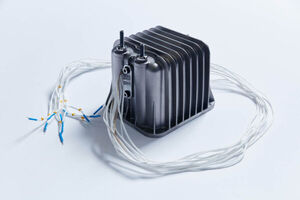
Denmark is building a fuel cell factory that offers 90% efficiency
"The factory from Haldor Topsøe is due to be completed in 2023. In the meantime, there is also close cooperation with the Saudi mega-project NEOM through the 'Dutch connection.' For the Danes, green energy is as natural as oil is for the Arabs. Denmark has been among the leaders in Europe for years. More than 30% of its energy consumption is renewable. And the northern Europeans are determined to hold on to this lead by investing billions in various projects for the future." [...]
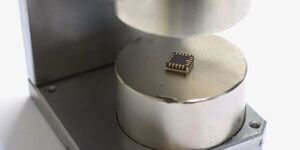
Advanced Graphene-based Hall Effect Sensor for Mapping of Battery Cells
"Paragraf, the leader in graphene-based transformative electronic devices, announces a new graphene Hall Effect sensor ideally suited to battery applications, such as the electric vehicle (EV) sector. The graphene GHS01AT Hall Effect sensor is optimised for use in relatively low field environments and normal ambient temperatures. Bringing the magnetic field measurement resolution towards that of more complex magnetic sensors, yet with the small size and ease of use of a Hall sensor, it can address monitoring tasks that conventional technologies simply cannot provide an effective solution for. The new GHS01AT Hall Effect sensors are ideally suited to the battery market. Here they will be of great value in battery cell analysis when investigating the validity of different battery cell chemistry derivatives and form factors under development. By using these magnetic sensors, it will be possible to get a more detailed and localised (point-to-point) understanding of battery cell behaviour." [...]
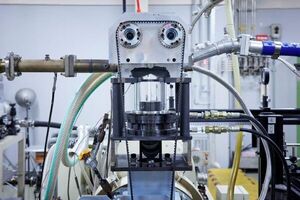
Nissan’s 100% electric motor-driven e-POWER technology reaches global milestone
"Nissan today announced a breakthrough in engine efficiency, reaching 50% thermal efficiency with its in-development, next generation e-POWER system. Nissan’s e-POWER system utilizes an on-board gasoline engine to provide electrical energy to the e-powertrain battery pack. Nissan’s latest approach to engine development has raised the bar to world-leading levels, accelerating past the current auto industry average range of 40% thermal efficiency, making it possible to even further reduce vehicle CO2 emissions. "In pursuit of carbon neutrality across our product lifecycle by 2050, Nissan aims to electrify all new models launched in major markets by the early 2030s,” said Toshihiro Hirai, senior vice president of the powertrain and EV engineering division. “Nissan's electrification strategy promotes the development of e-powertrains and high-performance batteries for EVs, with e-POWER representing another important strategic pillar." A dedicated approach towards enhanced efficiency Conventional internal combustion engine (ICE) vehicles demand power and performance from an engine under a wide range of speeds (RPMs) and loads." [...]
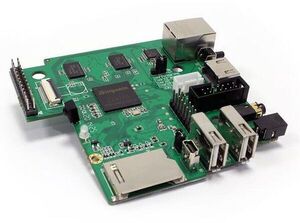
MIPS Technologies joins RISC-V, moves to open-source ISA standard
"The MIPS silicon manufacturer is one of the oldest RISC chip manufacturers, used in several systems since the late 80s. Characterized by clean and efficient designs, allowing adaption in varied applications, this company has been considered one of the most innovative in the market during its golden age - to the point that the Windows OS had a MIPS port in the early 90s. However, the company has been struggling with an increasingly lower market share and risked bankruptcy in recent years, ultimately leading to acquisition by start-up Wave Computing, which faced bankruptcy last year. How this company was reborn just weeks ago, exiting the state of bankruptcy, is surprising, but not at all irrational: in its official statement, (the new) MIPS has become a member of RISC-V International, the non-profit organization managing the fully open-hardware ISA, substantially replacing their current architecture with the de facto open chip standard in its entirety. Licensing of the original MIPS architecture to third parties will probably be managed as before, so that the "old" architecture will remain available upon need. This is officially known as the "8th generation" of MIPS chips, indicating a total architectural gap from the previous seven iterations, essentially leaving the old architecture and fully embracing the new one." [...]

Boeing Loyal Wingman Uncrewed Aircraft Completes First Flight
"Boeing [NYSE:BA] Australia and the Royal Australian Air Force (RAAF) have successfully completed the first test flight of the Loyal Wingman uncrewed aircraft. The flight of the first military aircraft to be designed and manufactured in Australia in more than 50 years flew under the supervision of a Boeing test pilot monitoring the aircraft from a ground control station at the Woomera Range Complex. “The Loyal Wingman’s first flight is a major step in this long-term, significant project for the Air Force and Boeing Australia, and we’re thrilled to be a part of the successful test,” said Air Vice-Marshal Cath Roberts, RAAF Head of Air Force Capability. “The Loyal Wingman project is a pathfinder for the integration of autonomous systems and artificial intelligence to create smart human-machine teams. “Through this project we are learning how to integrate these new capabilities to complement and extend air combat and other missions,” she said. Following a series of taxi tests validating ground handling, navigation and control, and pilot interface, the aircraft completed a successful takeoff under its own power before flying a pre-determined route at different speeds and altitudes to verify flight functionality and demonstrate the performance of the Airpower Teaming System design." [...]
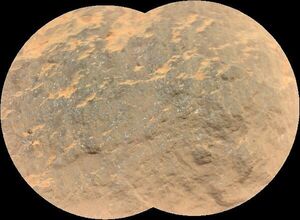
Perseverance Rover’s SuperCam Science Instrument Delivers First Results
"Data from the powerful science tool includes sounds of its laser zapping a rock in order to test what it’s made of. The first readings from the SuperCam instrument aboard NASA’s Perseverance rover have arrived on Earth. SuperCam was developed jointly by the Los Alamos National Laboratory (LANL) in New Mexico and a consortium of French research laboratories under the auspices of the Centre National d’Etudes Spatiales (CNES). The instrument delivered data to the French Space Agency’s operations center in Toulouse that includes the first audio of laser zaps on another planet. “It is amazing to see SuperCam working so well on Mars,” said Roger Wiens, the principal investigator for Perseverance’s SuperCam instrument from Los Alamos National Laboratory in New Mexico. “When we first dreamed up this instrument eight years ago, we worried that we were being way too ambitious." [...]

Rolls-Royce set to power Vertical Aerospace’s all-electric aircraft
"Rolls-Royce’s ground-breaking technology is set to power Vertical Aerospace’s flagship Urban Air Mobility (UAM) aircraft. A Rolls-Royce electrical power system will be integrated into the piloted all-electric vertical take-off and landing (eVTOL) vehicle, which will carry up to four passengers for 120 miles at cruise speeds of over 200mph and is on course to certify in 2024. Vertical Aerospace is a key collaboration for Rolls-Royce Electrical as it marks our first commercial deal in the UAM market and builds on previous agreements to work with partners on demonstrator programmes. Rolls-Royce will design the system architecture of the whole electrical propulsion system, the electric power system that includes our latest 100kW-class lift and push electrical propulsion units, the power distribution and the monitoring system that will support operations. Rob Watson, Director – Rolls-Royce Electrical, said: “We are delighted to collaborate with Vertical Aerospace for the electrical technology that will power their pioneering eVTOL aircraft. This exciting opportunity demonstrates our ambitions to be a leading supplier of sustainable complete power systems for the new Urban Air Mobility market which has the potential to transform the way that people and freight move from city to city.” Michael Cervenka, CEO – Vertical Aerospace said: “We are excited to collaborate with Rolls-Royce, bringing onboard a hugely experienced team with deep expertise and cutting-edge electrical technologies to power our pioneering eVTOL aircraft." [...]
Ciência e Tecnologia
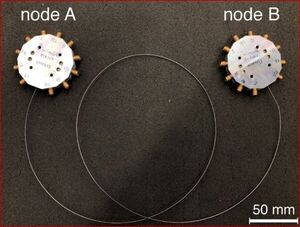
For first time, researchers send entangled qubit states through a communication channel
"In a breakthrough for quantum computing, University of Chicago researchers have sent entangled qubit states through a communication cable linking one quantum network node to a second node. The researchers, based in the Pritzker School of Molecular Engineering (PME) at the University of Chicago, also amplified an entangled state via the same cable first by using the cable to entangle two qubits in each of two nodes, then entangling these qubits further with other qubits in the nodes. The results, published February 24, 2021 in Nature, could help make quantum computing more feasible and could lay the groundwork for future quantum communication networks. “Developing methods that allow us to transfer entangled states will be essential to scaling quantum computing,” said Prof. Andrew Cleland, who led the research. Sending entangled photons through a network Qubits, or quantum bits, are the basic units of quantum information. By exploiting their quantum properties, like superposition, and their ability to be entangled together, scientists and engineers are creating next-generation quantum computers that will be able solve previously unsolvable problems." [...]

The perfect recipe for efficient perovskite solar cells
"A long-cherished dream of materials researchers is a solar cell that converts sunlight into electrical energy as efficiently as silicon, but that can be easily and inexpensively fabricated from abundant materials. Scientists at the Helmholtz-Zentrum Berlin have now come a step closer to achieving this. They have improved a process for vertically depositing a solution made from an inexpensive perovskite solute onto a moving substrate below. Not only have they discovered the crucial role played by one of the solvents used, but they have also taken a closer look at the aging and storage properties of the solution. Solar cells made of crystalline silicon still account for the lion's share of roof installations and solar farms. But other technologies have long since become established as well – such as those that convert sunlight into electrical energy through use of extremely thin layers of solar-cell material deposited upon a substrate." [...]

After cracking the “sum of cubes” puzzle for 42, mathematicians discover a new solution for 3
"The 21-digit solution to the decades-old problem suggests many more solutions exist. What do you do after solving the answer to life, the universe, and everything? If you’re mathematicians Drew Sutherland and Andy Booker, you go for the harder problem. In 2019, Booker, at the University of Bristol, and Sutherland, principal research scientist at MIT, were the first to find the answer to 42. The number has pop culture significance as the fictional answer to “the ultimate question of life, the universe, and everything,” as Douglas Adams famously penned in his novel “The Hitchhiker’s Guide to the Galaxy.” The question that begets 42, at least in the novel, is frustratingly, hilariously unknown. In mathematics, entirely by coincidence, there exists a polynomial equation for which the answer, 42, had similarly eluded mathematicians for decades." [...]
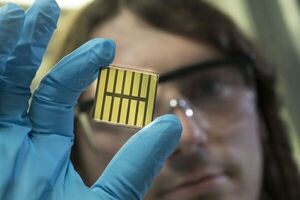
Shedding Light on Perovskite Films
"Efficient Materials for Future Solar Cells – New Model to Determine Photoluminescence Quantum Efficiency Perovskite semiconductors are considered promising materials for solar cells of the next generation. Suitability of a semiconductor for photovoltaics is reflected among others by the so-called photoluminescence quantum efficiency. Researchers of Karlsruhe Institute of Technology (KIT) have now developed a model, by means of which photoluminescence quantum efficiency of perovskite films can be determined exactly for the first time. This is reported in Matter (DOI: 10.1016/j.matt.2021.01.019). Photovoltaics decisively contributes to sustainable energy supply. The efficiency of solar cells in directly converting light energy into electrical energy depends on the material used." [...]

A Better Way to Measure Acceleration
"NIST researchers rely on a light touch. You’re going at the speed limit down a two-lane road when a car barrels out of a driveway on your right. You slam on the brakes, and within a fraction of a second of the impact an airbag inflates, saving you from serious injury or even death. The airbag deploys thanks to an accelerometer — a sensor that detects sudden changes in velocity. Accelerometers keep rockets and airplanes on the correct flight path, provide navigation for self-driving cars, and rotate images so that they stay right-side up on cellphones and tablets, among other essential tasks. Addressing the increasing demand to accurately measure acceleration in smaller navigation systems and other devices, researchers at the National Institute of Standards and Technology (NIST) have developed an accelerometer a mere millimeter thick that uses laser light instead of mechanical strain to produce a signal." [...]
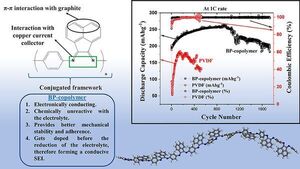
Built to Last: New Copolymer Binder to Extend the Life of Lithium Ion Batteries
"Scientists develop a novel binder material that protects the graphite anode of Li-ion batteries from degradation even after 1700 cycles The capacity of lithium-ion batteries decreases over time partly due to the degradation of the binder that protects the graphite anode. To address this problem, scientists from the Japan Advanced Institute of Science and Technology are investigating a new copolymer binder that can preserve the capacity of the anode at 95% of its original value even after >1700 charge cycles. Their findings can significantly enhance battery life for electric vehicles, artificial organs, and consumer electronics. Anyone who has owned a smartphone for over a year is most likely aware that its built-in lithium (Li)-ion battery does not hold as much charge as when the device was new. The degradation of Li-ion batteries is a serious issue that greatly limits the useful life of portable electronic devices, indirectly causing huge amounts of pollution and economic losses. In addition to this, the fact that Li-ion batteries are not very durable is a massive roadblock for the market of electric vehicles and renewable energy harvesting." [...]

Seeing both sides of light collection
"Combining two light-absorbing materials and optimizing the flow of current improves the performance of solar cells. Two types of materials are better than one when it comes to solar cells, as revealed by an international team that has tested a new combination of materials and architecture to improve solar-cell efficiency. Silicon has long dominated as the premier material for solar cells, helped by its abundance as a raw material. However, perovskites, a class of hybrid organic-inorganic material, are a viable alternative due to their low-cost and large-scale manufacture and potentially higher performance. While still too unstable for full commercialization, they might become available to the market by 2022. KAUST's Michele De Bastiani and Stefaan De Wolf, working with colleagues in Canada, Germany and Italy, now show that a combination of the two is the best approach." [...]

Hubble sees new atmosphere forming on a rocky exoplanet
"For the first time, scientists using the NASA/ESA Hubble Space Telescope have found evidence of volcanic activity reforming the atmosphere on a rocky planet around a distant star. The planet, GJ 1132 b, has a similar density, size, and age to Earth. The planet GJ 1132 b appears to have begun life as a gaseous world with a thick blanket of atmosphere. Starting out at several times the radius of Earth, this ‘sub-Neptune’ quickly lost its primordial hydrogen and helium atmosphere, which was stripped away by the intense radiation from its hot, young star. In a short period of time, it was reduced to a bare core about the size of Earth. To the surprise of astronomers, new observations from Hubble have uncovered a secondary atmosphere that has replaced the planet’s first atmosphere." [...]

New AI tool makes vast data streams intelligible and explainable
"In a sophisticated version of Where’s Waldo, the SmartTensors AI platform uses unsupervised machine learning to find the key data features that explain a whole data set, promising a boon for big-data analytics Making sense of vast streams of big data is getting easier, thanks to an artificial-intelligence tool developed at Los Alamos National Laboratory. SmartTensors sifts through millions of millions of bytes of diverse data to find the hidden features that matter, with significant implications from health care to national security, climate modeling to text mining, and many other fields. “SmartTensors analyzes terabytes of diverse data to find the hidden patterns and features that make the data understandable and reveal its underlying processes or causes,” said Boian Alexandrov, a scientist at Los Alamos National Laboratory, AI expert, and principal investigator on the project. “What our AI software does best is extracting the latent variables, or features, from the data that describe the whole data and mechanisms buried in it without any preconceived hypothesis.” SmartTensors also can identify the optimal number of features needed to make sense of enormous, multidimensional datasets. “Finding the optimal number of features is a way to reduce the dimensions in the data while being sure you’re not leaving out significant parts that lead to understanding the underlying processes shaping the whole the dataset,” said Velimir (“Monty”) Vesselinov, an expert in machine learning, data analytics and model diagnostics at Los Alamos and also a principal investigator. Tensors make big data manageable The nonnegativity of the latent features and determining their optimal number reduce a vast data set to a scale that’s manageable for computers to process and subject-matter-experts to analyze." [...]

Using artificial intelligence to generate 3D holograms in real-time
"A new method called tensor holography could enable the creation of holograms for virtual reality, 3D printing, medical imaging, and more — and it can run on a smartphone. Despite years of hype, virtual reality headsets have yet to topple TV or computer screens as the go-to devices for video viewing. One reason: VR can make users feel sick. Nausea and eye strain can result because VR creates an illusion of 3D viewing although the user is in fact staring at a fixed-distance 2D display. The solution for better 3D visualization could lie in a 60-year-old technology remade for the digital world: holograms. Holograms deliver an exceptional representation of 3D world around us." [...]
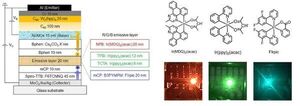
Dresden Researchers Develop New Strategy For Efficient Oled Active Matrix Displays
"In a new publication in the scientific journal “Nature Materials”, researchers of the Institute for Applied Physics at TU Dresden introduce a novel device concept towards high-efficient and low-voltage vertical organic lighting-emitting transistors. With the new device architecture and fabrication technology, the team paves the way for a broad application of efficient OLED active matrix displays. In the group of Prof. Karl Leo, physicists, material scientists and engineers are working jointly on the development of novel organic materials and devices for high performance, flexible and possibly even biocompatible electronics and optoelectronics of the future. Increasing the performance of organic devices is one of the key challenges in their research. It was only last year, when the team headed by Dr. Hans Kleemann announced an important breakthrough with the development of efficient, printable vertical organic transistors. Now Dr. Zhongbin Wu, Dr. Yuan Liu, and PhD student Erjuan Guo present the first electronic device that combines a vertical organic permeable base transistor (OPBT) and an OLED." [...]
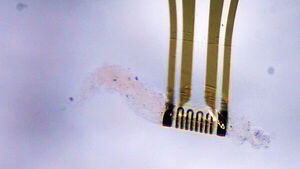
Adaptive Microelectronics Reshape Independently and Detect Environment for First Time
"Nanoscientists from Chemnitz and Dresden develop adaptive microelectronics that can move independently according to sensor data and align themselves specifically for activities - possible applications in biomedicine and bioneural interfacing Flexible and adaptive microelectronics is considered an innovation driver for new and more effective biomedical applications. These include, for example, the treatment of damaged nerve bundles, chronic pain, or the control of artificial limbs. For this to work, close contact between electronics and neural tissue is essential for effective electrical and mechanical coupling. In addition, potential applications arise from the production of tiny and flexible surgical tools. An international team led by Prof. Dr. Oliver G. Schmidt, head of the Institute for Integrative Nanosciences at the Leibniz Institute for Solid State and Materials Research (IFW) Dresden and holder of the Professorship of Materials for Nanoelectronics at Chemnitz University of Technology and initiator of the Center for Materials, Architectures and Integration of Nanomembranes (MAIN), as well as Boris Rivkin, a PhD student in Prof. Schmidt’s group, has now demonstrated for the first time that such adaptive microelectronics are able to position themselves in a controlled manner, manipulate biological tissue, and respond to their environment by analyzing sensor signals. The results, with Rivkin as first author, have appeared in the journal “Advanced Intelligent Systems”." [...]

Robots learn faster with quantum technology
"Artificial intelligence is part of our modern life by enabling machines to learn useful processes such as speech recognition and digital personal assistants. A crucial question for practical applications is how fast such intelligent machines can learn. An experiment at the University of Vienna has answered this question, showing that quantum technology enables a speed-up in the learning process. The physicists, in an international collaboration within Austria, Germany, the Netherlands, and the USA, have achieved this result by using a quantum processor for single photons as a robot. This work, which con-tributes to the advancement of quantum artificial intelligence for future applications, is published in the current issue of the journal "Nature". Robots solving computer games, recognizing human voices, or helping in finding optimal medical treatments: those are only a few astonishing examples of what the field of artificial intelligence has produced in the past years." [...]

Cells as computers
"Scientists at ETH Zurich are working to develop information-processing switching systems in biological cells. Now, for the first time, they have developed an OR switch in human cells that reacts to different signals. Biological cells might one day be equipped with artificial genetic programs that work in much the same way as electronic systems. Such reprogrammed cells could perform medical tasks in our bodies, such as diagnosing diseases or providing treatment. One potential application would be altered immune cells that combat tumour cells. Since tumour cells have different genetic characteristics, the following biochemical program, for example, would have to run in the therapeutic cells: “Destroy a cell if it is type X or Y or Z”." [...]

Cheap, nontoxic carbon nanodots poised to be quantum dots of the future
"Tiny fluorescent semiconductor dots, called quantum dots, are useful in a variety of health and electronic technologies but are made of toxic, expensive metals. Nontoxic and economic carbon-based dots are easy to produce, but they emit less light. A new study that uses ultrafast nanometric imaging found good and bad emitters among populations of carbon dots. This observation suggests that by selecting only super-emitters, carbon nanodots can be purified to replace toxic metal quantum dots in many applications, the researchers said. The findings, published in the Proceedings of the National Academy of Sciences, brought together researchers from the University of Illinois Urbana-Champaign and the University of Maryland, Baltimore County in a collaborative project through the Beckman Institute for Advanced Science and Technology at Illinois. “Coming into this study, we did not know if all carbon dots are only mediocre emitters or if some were perfect and others were bad,” said Illinois chemistry professor Martin Gruebele, who led the study." [...]

Sushi-like rolled 2D heterostructures may lead to new miniaturized electronics
"The recent synthesis of one-dimensional van der Waals heterostructures, a type of heterostructure made by layering two-dimensional materials that are one atom thick, may lead to new, miniaturized electronics that are currently not possible, according to a team of Penn State and University of Tokyo researchers. Engineers commonly produce heterostructures to achieve new device properties that are not available in a single material. A van der Waals heterostructure is one made of 2D materials that are stacked directly on top of each other like Lego-blocks or a sandwich. The van der Waals force, which is an attractive force between uncharged molecules or atoms, holds the materials together. According to Slava V. Rotkin, Penn State Frontier Professor of Engineering Science and Mechanics, the one-dimensional van der Waals heterostructure produced by the researchers is different from the van der Waals heterostructures engineers have produced thus far. "It looks like a stack of 2D-layered materials that are rolled up in a perfect cylinder,” Rotkin said." [...]

Breaking the warp barrier for faster-than-light travel
"Astrophysicist at Göttingen University discovers new theoretical hyper-fast soliton solutions If travel to distant stars within an individual’s lifetime is going to be possible, a means of faster-than-light propulsion will have to be found. To date, even recent research about superluminal (faster-than-light) transport based on Einstein’s theory of general relativity would require vast amounts of hypothetical particles and states of matter that have “exotic” physical properties such as negative energy density. This type of matter either cannot currently be found or cannot be manufactured in viable quantities. In contrast, new research carried out at the University of Göttingen gets around this problem by constructing a new class of hyper-fast ‘solitons’ using sources with only positive energies that can enable travel at any speed. This reignites debate about the possibility of faster-than-light travel based on conventional physics. The research is published in the journal Classical and Quantum Gravity." [...]

Microchips of the Future: Suitable Insulators are Still Missing
"Until now, hexagonal boron nitride was considered the insulator of choice for miniaturised transistors. New investigations by TU Wien (Vienna) show: this may not be the way to go. For decades, there has been a trend in microelectronics towards ever smaller and more compact transistors. 2D materials such as graphene are seen as a beacon of hope here: they are the thinnest material layers that can possibly exist, consisting of only one or a few atomic layers. Nevertheless, they can conduct electrical currents - conventional silicon technology, on the other hand, no longer works properly if the layers become too thin. However, such materials are not used in a vacuum; they have to be combined with suitable insulators – in order to seal them off from unwanted environmental influences, and also in order to control the flow of current via the so-called field effect." [...]

‘Wearable Microgrid’ Uses the Human Body to Sustainably Power Small Gadgets
"Nanoengineers at the University of California San Diego have developed a “wearable microgrid” that harvests and stores energy from the human body to power small electronics. It consists of three main parts: sweat-powered biofuel cells, motion-powered devices called triboelectric generators, and energy-storing supercapacitors. All parts are flexible, washable and can be screen printed onto clothing. The technology, reported in a paper published Mar. 9 in Nature Communications, draws inspiration from community microgrids. “We’re applying the concept of the microgrid to create wearable systems that are powered sustainably, reliably and independently,” said co-first author Lu Yin, a nanoengineering Ph.D. student at the UC San Diego Jacobs School of Engineering." [...]

Agile underwater glider could quietly survey the seas
"Autonomous underwater vehicles have become versatile tools for exploring the seas. But they can be disruptive to the environment or have trouble traveling through confined spaces. Purdue University researchers are studying an alternative: highly maneuverable, low-cost underwater gliders that operate silently. Components and sensors of the glider also can be easily swapped out or added according to a wide range of mission specifications. “Our goal is persistent operation of mobile robots in challenging environments,” said Nina Mahmoudian, associate professor of mechanical engineering. “Most underwater robots have limited battery life and must return back after just a few hours." [...]
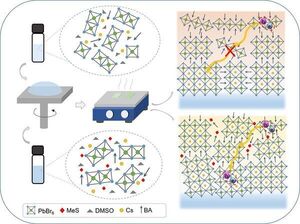
Producing highly efficient LEDs based on 2D perovskite films
"Energy-efficient light-emitting diodes (LEDs) have been used in our everyday life for many decades. But the quest for better LEDs, offering both lower costs and brighter colours, has recently drawn scientists to a material called perovskite. A recent joint-research project co-led by the scientist from City University of Hong Kong (CityU) has now developed a 2D perovskite material for the most efficient LEDs. From household lighting to mobile phone displays, from pinpoint lighting needed for endoscopy procedures to light source to grow vegetables in Space, LEDs are everywhere. Yet current high-quality LEDs still need to be processed at high temperatures and using elaborated deposition technologies — which make their production cost expensive. Scientists have recently realised that metal halide perovskites – semiconductor materials with the same structure as calcium titanate mineral, but with another elemental composition – are extremely promising candidates for next-generation LEDs." [...]
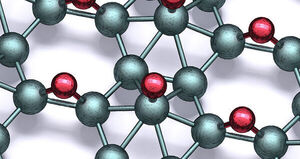
Scientists Stabilize Atomically Thin Boron for Practical Use
"Borophane is stable outside a vacuum, opening possibilities for real-world applications. Northwestern Engineering researchers have, for the first time, created borophane — atomically thin boron that is stable at standard temperatures and air pressures. Researchers have long been excited by the promise of borophene — a single-atom-thick sheet of boron — because of its strength, flexibility, and electronics properties. Stronger, lighter, and more flexible than graphene, borophene could potentially revolutionize batteries, electronics, sensors, photovoltaics, and quantum computing. Unfortunately, borophene only exists inside of an ultrahigh vacuum chamber, limiting its practical use outside the lab. By bonding borophene with atomic hydrogen, the Northwestern team created borophane, which has the same exciting properties as borophene and is stable outside of a vacuum." [...]

Contactless high performance power transmission
"A team led by Technical University of Munich (TUM) physicists Christoph Utschick and Prof. Rudolf Gross has succeeded in making a coil with superconducting wires capable of transmitting power in the range of more than five kilowatts contactless and with only small losses. The wide field of conceivable applications include autonomous industrial robots, medical equipment, vehicles and even aircraft. Contactless power transmission has already established itself as a key technology when it comes to charging small devices such as mobile telephones and electric toothbrushes. Users would also like to see contactless charging made available for larger electric machines such as industrial robots, medical equipment and electric vehicles. Such devices could be placed on a charging station whenever they are not in use. This would make it possible to effectively utilize even short idle times to recharge their batteries." [...]

UCI-led team creates new ultralightweight, crush-resistant tensegrity metamaterials
"Study shows how century-old design principle can be a pathway to overcoming failure. Catastrophic collapse of materials and structures is the inevitable consequence of a chain reaction of locally confined damage – from solid ceramics that snap after the development of a small crack to metal space trusses that give way after the warping of a single strut. In a study published this week in Advanced Materials, engineers at the University of California, Irvine and the Georgia Institute of Technology describe the creation of a new class of mechanical metamaterials that delocalize deformations to prevent failure. They did so by turning to tensegrity, a century-old design principle in which isolated rigid bars are integrated into a flexible mesh of tethers to produce very lightweight, self-tensioning truss structures. Starting with 950 nanometer-diameter members, the team used a sophisticated direct laser writing technique to generate elementary cells sized between 10 and 20 microns. These were built up into eight-unit supercells that could be assembled with others to make a continuous structure." [...]

Most distant quasar with powerful radio jets discovered
"With the help of the European Southern Observatory’s Very Large Telescope (ESO’s VLT), astronomers have discovered and studied in detail the most distant source of radio emission known to date. The source is a “radio-loud” quasar — a bright object with powerful jets emitting at radio wavelengths — that is so far away its light has taken 13 billion years to reach us. The discovery could provide important clues to help astronomers understand the early Universe. Quasars are very bright objects that lie at the centre of some galaxies and are powered by supermassive black holes. As the black hole consumes the surrounding gas, energy is released, allowing astronomers to spot them even when they are very far away. The newly discovered quasar, nicknamed P172+18, is so distant that light from it has travelled for about 13 billion years to reach us: we see it as it was when the Universe was just around 780 million years old." [...]

How a ladybug warps space-time
"Vienna quantum physicists measure the smallest gravitational force yet Researchers at the University of Vienna and the Austrian Academy of Sciences, led by Markus Aspelmeyer have succeeded in measuring the gravitational field of a gold sphere, just 2 mm in diameter, using a highly sensitive pendulum - and thus the smallest gravitational force. The experiment opens up new possibilities for testing the laws of gravity on previously unattained small scales. The results are published in the journal Nature. Gravity is the weakest of all known forces in nature - and yet it is most strongly present in our everyday lives. Every ball we throw, every coin we drop - all objects are attracted by the Earth's gravity. In a vacuum, all objects near the Earth's surface fall with the same acceleration: their velocity increases by about 9.8 m/s every second." [...]
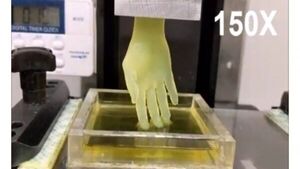
Rapid 3D printing method moves toward 3D-printed organs
"It looks like science fiction: A machine dips into a shallow vat of translucent yellow goo and pulls out what becomes a life-sized hand. But the seven-second video, which is sped-up from 19 minutes, is real. The hand, which would take six hours to create using conventional 3D printing methods, demonstrates what University at Buffalo engineers say is progress toward 3D-printed human tissue and organs — biotechnology that could eventually save countless lives lost due to the shortage of donor organs. “The technology we’ve developed is 10-50 times faster than the industry standard, and it works with large sample sizes that have been very difficult to achieve previously,” says the study’s co-lead author Ruogang Zhao, PhD, associate professor of biomedical engineering. The work is described in a study published Feb. 15 in the journal Advanced Healthcare Materials. It centers on a 3D printing method called stereolithography and jelly-like materials known as hydrogels, which are used to create, among things, diapers, contact lenses and scaffolds in tissue engineering." [...]
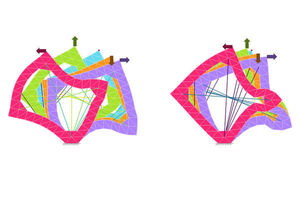
Helping soft robots turn rigid on demand
"New type of control system may broaden robots’ range of tasks and allow safer interactions with people. Imagine a robot. Perhaps you’ve just conjured a machine with a rigid, metallic exterior. While robots armored with hard exoskeletons are common, they’re not always ideal. Soft-bodied robots, inspired by fish or other squishy creatures, might better adapt to changing environments and work more safely with people. Roboticists generally have to decide whether to design a hard- or soft-bodied robot for a particular task." [...]

Instrument at BESSY II shows how light activates MoS2 layers to become catalysts
"Thin films of molybdenum and sulfur belong to a class of materials that can be considered for use as photocatalysts. Inexpensive catalysts such as these are needed to produce hydrogen as a fuel using solar energy. However, they are still not very efficient as catalysts. A new instrument at the Helmholtz-Berlin Zentrum’s BESSY II now shows how a light pulse alters the surface properties of the thin film and activates the material as a catalyst. MoS2 thin films of superposed alternating layers of molybdenum and sulfur atoms form a two-dimensional semiconducting surface. However, even a surprisingly low-intensity blue light pulse is enough to alter the properties of the surface and make it metallic." [...]
Documentação
A documentação é parte essencial do processo de aprendizagem e a Internet além de artigos interessantes de explorar também tem alguma documentação em formato PDF interessante de ler. Todos os links aqui apresentados são para conteúdo disponibilizado livremente pelo editor do livro.

An Introduction to Ray Tracing
"The creation of ever more realistic 3-D images is central to the development of computer graphics. The ray tracing technique has become one of the most popular and powerful means by which photo-realistic images can now be created. The simplicity, elegance and ease of implementation makes ray tracing an essential part of understanding and exploiting state-of-the-art computer graphics. An Introduction to Ray Tracing develops from fundamental principles to advanced applications, providing "how-to" procedures as well as a detailed understanding of the scientific foundations of ray tracing. It is also richly illustrated with four-color and black-and-white plates. This is a book which will be welcomed by all concerned with modern computer graphics, image processing, and computer-aided design." [...]

newelectronics 9 Março 2021
"New Electronics is a fortnightly magazine focusing on technological innovation, news and the latest developments in the electronics sector. Downloadable as a digital page turner or pdf file, or offered as a hard copy, the New Electronics magazine is available in a format to suit you. " [...]
Projetos Maker
Diversos Projetos interessantes.
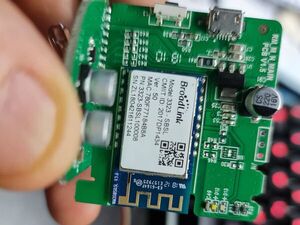
Broadlink RM Mini 3: From Broadlink 3323 to ESP8266
"How to insert an ESP8266 into the device and how to use it with Tasmota and MQTT. The story is really simple: I bought this RM Mini 3 some years ago. From a day to other it refuse to work, so after opening it and seeing that the module was not an ESP, I put it in a box until some time ago. Since the module was very similar in appearance to a ESP-12 I had in my drawer for long time, I searched for informations about a possible change. So I found this rare link https://www.reddit.com/r/broadlink/comments/a6y0q7/pinout_of_the_broadlink_rm_pro_rm3/ to a post where another RM Mini 3 owner shared the hard-hitting informations he retrived. The post mentions this other link https://community.home-assistant.io/t/reverse-engineering-broadlink-rm-pro-devices/85441 and I started from this informations." [...]
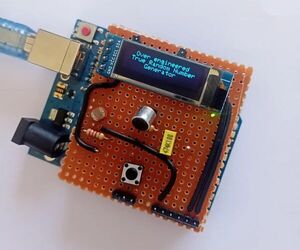
Over Engineered True Random Value Generator
"Random numbers are often used in daily for example in encryption, gambling, gaming and much more. These numbers are generated by computers using complex algorithm but it can be predicated if we know the seed value and the algorithm. So this is my attempt to create over engineered and as far as possible most random number generator. If not algorithms then what should be used to create random. This universe is the most unpredictable thing, then why not use its elements to generate random numbers. Elements such as pressure, humidity, temperature, vapour pressure and many more." [...]
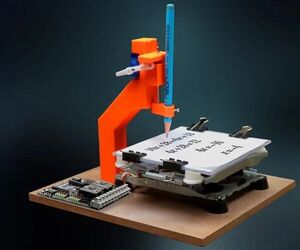
3D Printed Mini CNC Machine
"Hi Friends Welcome to the DiY Projects Lab insctructable , I hope you all are well, so today we are going to learn how to make your own 3D Printed CNC machine. It is a prototype module, but once you build it you will definitely be able to build a very large CNC machine and with much higher accuracy. The principle will be the same, we will use DVD Writers Stepper Motors to control the movement of 3 axis of CNC machine. List of some use full material required: Arduino nano x1 CNC shield x1 A4988 Stepper motor Driver x2 Servo motor x1 pen x1 old DVD Scrap X2 Some wires DiY Projects Lab" [...]
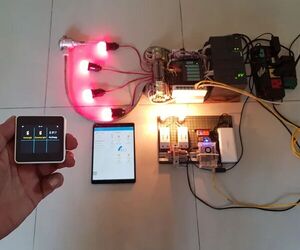
Home Assistant & Industrial Automation System
"The "Internet of Things" is the biggest current change nowadays, more and more home and industrial devices can be communicated together in its network. The protocol "Message Queue Telemetry Transport" (abbreviated: MQTT) is used in the I.o.T and I.I.o.T as a potential communication protocol. My project shows how to combine Home Assistant and Industrial Automation System together by MQTT protocol. By this way, all home & industrial devices can be controlled and monitored by Home Assistant dashboard from laptop/ tablet or smart phone, and even they can be controlled by a portable ESP32-powered screen like M5Stack Core 2. Let's getting started. Main components are included as follows: 1pcs x Raspberry Pi 4 Model B." [...]

GameBoy 5110 - Arduino Handheld Game Console by 3D Printing
"During the COVID-19 crisis, how to spend a lot of quarantine time at home? In addition to improving cooking skills and doing sports, game lovers can also make their own unique GameBoy game console! The blue backlit LCD screen of the Nokia 5110 is used here (which makes it more retro style) and the 3D printed GameBoy shape shell. The project is based on Arduion Nano, you can also use your favorite hardware. Supplies:LCD5110_Graph.h - "Snake" Game Programming Code: Arduino Source Code Arduino Nano × 1 Nokia 5110 LED LCD screen × 1 Piezo buzzer × 1 Mini slide switch × 1 Button B3F Omron 12mm (multiple colors) × 6 Prototype board × 1 9V battery compartment × 1 Wire × several DuPont wire in in female × 1 PLA printing material × 1 Nut × several 2mm bolt × several Soldering iron × 1 Tin and flux × 1 Hot glue gun × 1 Screwdriver × 1" [...]
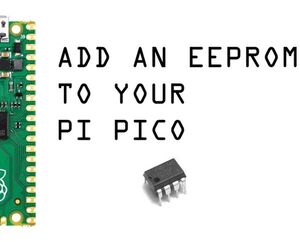
How to Add an EEPROM to Raspberry Pi Pico
"EEPROM is essential for many microcontroller based projects. Unfortunately, the Raspberry Pi Pico misses out on the EEPROM. So, in this write-up, I shall go through the process of adding an EEPROM to your Pi Pico. Supplies: 1. CAT24C32/AT24C32 EEPROM The chip's pins are same for all EEPROM sizes, so you can use EEPROMs with higher capacity. Search for CAT24C64 for 64Kilo bits or 8KB CAT24C128 for 128Kilo bits or 16KB." [...]
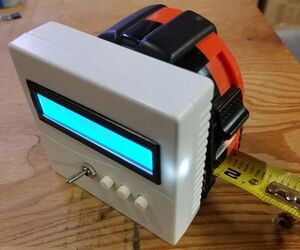
Pi Powered Pie Partitioning and Polygon Pruning Tool
"Have you ever served pie and had kids complain that someone else got a slightly bigger piece? Or maybe you want to create a cool 7-sided polygon from a boring round cake. Well now there is a way to scientifically ensure that your pie slices are cut to exactly the same size or that your cake polygon is perfectly dimensioned all within 1/16 inch accuracy! I speak, of course, of the Pi Powered Pie Partitioning and Polygon Pruning Tool. While you might expect to see this space-age marvel show up on Shark Tank or late night TV ads for tens of dollars, Im here to show how you can make your own for just a fraction of that cost. Even better, it will become the envy of your neighborhood and help to make your parties an A-list rated invitation." [...]
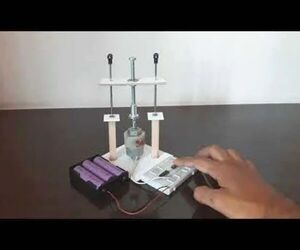
Linear Actuator Mechanism Using DC Motor
"Hello friends, in this instructable we are going to make a linear actuator using a simple DC motor. The application of this instructable is in controlled bi-directional linear mechanism smoothly in one axis. In this we are going to use motor controller IC [L293D].This IC can also be used to control one more motor bidirectionally with it but in this instructable we are using only one motor. The inputs are given to it using push buttons and output through DC motor. This is made just to understand the conversion of rotary motion to linear motion easily. Supplies: 1." [...]

DHT22 Sensor
"In this project guide, we show you how to make the popular DHT22 sensor. This DHT22 easily connects to a variety of microcontrollers to send digital temperature and humidity readouts. You can monitor temperatures on your phone, create an alarm to signal when humidity reaches a certain level, or simply read statuses on your computer. TOOLS - Bantam Tools Desktop PCB Milling Machine - Computer with Bantam Tools Desktop Milling Machine Software installed - Adafruit DHT-sensor-library installed - Flat end mill, 1/32" (optional) - Flat end mill, 1/64” - Bit fan - Alignment bracket - Soldering iron - Diagonal wire clippers - USB cable MATERIALS - PCB blank, FR-1, single-sided - Nitto tape, high-strength, double-sided - DHT22 sensor, AM2302 - 4.7K resistor, 0805 SMD - 1K resistor, 0805 SMD - 0.1 uF ceramic capacitor, - 0805 SMD - LED, 5mm - Male headers, 1x3 at 90º angle FILES - Humidity-Temperature-Sensor.brd file downloaded" [...]

Electret Mic Preamp
"In this project guide, we show you how to use your Desktop PCB Milling Machine to make an electret mic preamp. This circuit, based on an LM358 operational amplifier, is essential for a number of audio-reactive projects. Lets dive in! TOOLS - Bantam Tools Desktop PCB Milling Machine - Computer with Bantam Tools Desktop Milling Machine Software installed - Flat end mill, 1/32" - Flat end mill, 1/64” - Alignment bracket - Soldering iron - Diagonal wire clippers - USB cable - Bit fan MATERIALS - PCB blank, FR-1, single-sided - Nitto tape, high-strength, double-sided - Resistors, 100K (2) - Resistors, 10K (2) - Resistors, 1K - Ceramic capacitor, 0.1uF - Electrolytic capacitor, 470uF - Electrolytic capacitor, 10uF - Screw terminal, 1x2 - Dip socket, 2x4 - Potentiometer - Horizontal audio jack LED - Electret mic FILES - Electret-Mic-Preamp.brd file downloaded" [...]
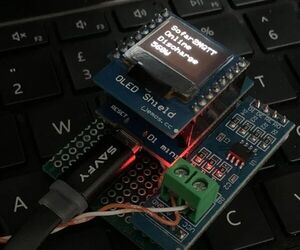
Sofar2mqtt - Remote Control for Sofar Solar Inverters
"A smart home interface for Sofar solar and battery inverters. Supported models:ME3000SP and HYD-xx00 Sofar2mqtt is a remote control interface for Sofar solar and battery inverters. It allows remote control of the inverter and reports the invertor status, power usage, battery state etc for integration with smart home systems such as Open Energy Monitor, Home Assistant and Node-Red. As a prerequisite, you will need to be running an MQTT broker on your network. A Step 10 details the options for this. For read only mode, it will send inverter status messages via MQTT with the inverter in any run mode." [...]

DIY Wireless Power Meter | 100VDC 100A
"Hey! everyone, My name is Steve Today Im gonna show how I build this Power Meter Using ESP8266 & INA226 Current Sensor The Screen seems to fluctuate its just due to the camera in real its normal Ive built the Codes with ESPHome These can measure current 1mA to 100Amp and Voltage up to 100VDC, and its very precise And yes it can also measure negative current And I also have added DHT11 So it can measure Temperature & Humidity It can also be integrated with your Home Assistant and you can see it wirelessly Ill mostly use this for capacity testing Lifepo4 Battery This is the First Version Ive made there are so many things to improve Features: - Input Power - 5V DC Measurement - 0-100VDC - 0-100A Built-in Features - 0.96" Oled - OTA Update - Temperature & Humidity Read - Wireless - Extra Ports for Future Expandability" [...]
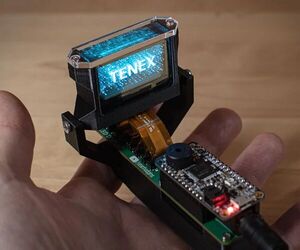
TENEX - Solid State Volumetric OLED Display
"When we think of our future, we see floating holographic displays, screens and neon everywhere, and the most ridiculous technology. Now we just have boring flat high definition displays from TVs down to our phones and watches. We need to bring our true future forward, the one we always wanted starting with the ridiculously cool mono-colour displays and in this case, a solid state volumetric display. Volumetric displays come in all sorts of shapes and sizes, but they generally rely on high frequency moving or spinning parts. Fast enough to cause some damage to humans if they were to come in contact with them. A solid state display uses layers of displays and pixels to give depth to the user." [...]

DIY Arduino UNO Bluetooth | How to Make Arduino Uno Can Be Upload Code Via Bluetooth
"Hi everyone, now I will show you how I made arduino uno board using the atmega328p can be upload code via bluetooth HC-05 called as "DIY Bluino One". A year ago I have made a series of tutorials about how to configure bluettoh HC05 for upload code via bluetooth. This is kind of a updated version of that. So in this tutorial we will be looking into the schematic of DIY Arduino Uno Bluetooth, modify it a little to our needs, make a PCB out of it and solder the required components to make the final product. But before starting let me tell you that I will only using 2 SMD components (AMS117 3V3/5V) to make my version of arduino because not everybody has a hard to soldering a lot of SND components. Moreover through hole components are cheaper than SMD components in most of the cases." [...]

LCDduino – Arduino Compatible 16X2 LCD module
"The LCDduino board enables users to create many applications/projects that require a 16×2 LCD display and Arduino. The board has the exact size of 16×2 LCD and can be installed on the backside of the LCD. This is a low-cost solution that has onboard Arduino + LCD so no extra Arduino Nano or Arduino board is required. The Arduino compatible hardware includes onboard programming and boot-loader connectors, Atmega328 microcontroller, and 16×2 LCD interface. Each Arduino I/O Pin including the VCC and GND is exposed to the connectors for easy connection with sensors and other devices. The board enables the easy interface of many devices and sensors." [...]
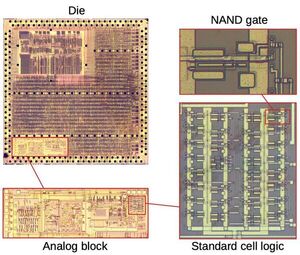
Reverse-engineering the standard-cell logic inside a vintage IBM chip
"Integrated circuits are often built from standard-cell logic, constructed from standardized building blocks such as NAND gates. Since I've been looking at a chip that uses standard-cell logic, I figured it was a good opportunity to examine standard-cell logic closely by reverse-engineering a simple block of logic on the chip. (It turned out to be a divide-by-16 module.) The diagram below shows the die from an IBM token ring chip from 1993. The chip contains a block of analog network circuitry, but curiously the analog block contains some standard-cell digital logic. Finally, zooming in shows one NAND gate in the logic." [...]

DMX RGB Mixer for Lights
"Five channels circuit to control Red, Green, Blue, Brightness and Strobo of your LED lamps in an handy box! In these days a complete and rich lights control DMX console is available to buy at shops for a few tens of Eur only, but we also know how is interesting and exciting to build one by ourself. Here it is mine, a basic complete circuit to control RGB (red, green and blue) lamps by the way of sliders, in a small handy box. You may also control brightness of all combinations of colours. A push button toggles RGB and STROBO mode, and with the rotary potentiometer you may change the strobo frequency rate. Coloured LEDs are just to remember the single functionality of the sliders, always on." [...]
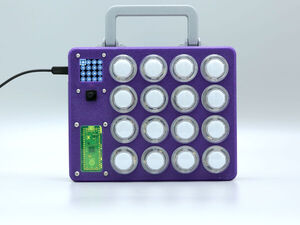
Raspberry Pi Pico and LED Arcade Button MIDI Controller
"DIY MIDI Controller Build your own CircuitPython powered MIDI controller! This "MIDI fighter"-like controller features 16 arcade buttons with built-in LEDs, an OLED screen and joystick. Play drums, synthesizers or anything MIDI related! All of the electronics are housed in a snap-fit 3D printed case. Buttons and LEDs The Raspberry Pi Pico has plenty of GPIO for connecting 4x4 buttons. The AW9525 GPIO expander / LED driver powers the LEDs and connects to the Raspberry Pi Pico over I2C." [...]
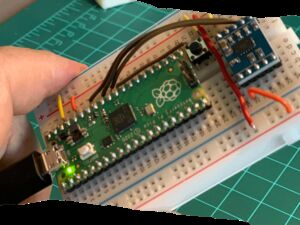
TinyML - Motion Recognition Using Raspberry Pi Pico
"In this tutorial, we will use machine learning to build a gesture recognition system that runs on a tiny microcontroller, the RP2040. This tutorial has 2 parts. The first one is to explore the Raspberry Pi Pico, its main components, and how to program it using Micropython and its C/C++ SDK (Software Development Kit). Next, we will use the Pico to capture "gesture data" to be used on a TinyML model training, using Edge Impulse Studio. Once developed and tested, the model will be deployed and used for real inference on the same device. " [...]

DSP for FPGA: Rewriting FIR Logic to Meet Timing
"Continuing with my simple FIR filter Verilog module, this project walks through how to rewrite HDL logic when setup timing violations occur. In my last project, I demonstrated the initial steps to writing a custom FIR module in Verilog. That project resulted in a LPF FIR that functioned properly in the behavioral simulation, but failed to meet timing requirements when placed and routed into a design. Starting with the design as is from the previous project, let's walk though how to analyze a design when it fails to meet timing requirements. Timing requirements are first determined in the implementation of a design in Vivado when the logic is being placed and routed in the fabric of the target FPGA chip (in this case it is the Zynq 7020 on the Arty Z7 development board that I'm using). I chose to import the FIR as an RTL module into a block design for the Arty Z7 where a DDS compiler being streamed phase increment offset values from memory via an AXI DMA (direct memory access) block can input varying frequency sinusoids to demonstrate how the LPF FIR behaves." [...]

4 Channel Analog Video Distribution Amplifier
"The project presented here is a low-cost video distribution amplifier capable of driving up to four video lines. The amplifier is configured with a non-inverting gain of 2. The input video source is terminated in 75 Ohms and is applied to the high impedance non-inverting input. Each output line is connected to the op-amp’s output via 75 Ohms series back termination resistor for proper cable termination. The termination resistor at the other end of the lines divides the output signal by 2, which is compensated by the gain of 2 of the op-amp. The project is built using AD8010 op-amp which is optimized for this specific function of providing excellent video performance in driving multiple video loads in parallel." [...]
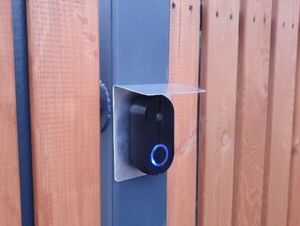
Smart Doorbell – DIY project based on ESP32
"In this article, we will make such a doorbell. I named it SS4H-SD Smart Doorbell. It was supposed to be “Video Doorbell”, but the short form You surely know this feeling when the doorbell rings while you are doing something interesting: watching a movie, playing a video game, or spending a romantic evening with your loved one. And when it turns out that this is an uninvited/unwanted guest, you get even more pissed off. Of course, you can ignore it and not open the door, but there will always be this hint of uncertainty – “maybe it was important”. The solution to this problem is the “smart doorbell”." [...]
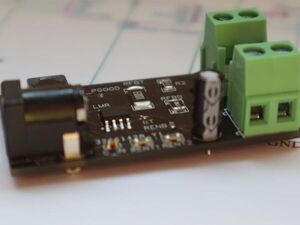
48V -5V (10W) DC-DC Step Down Converter
"Very versatile DC-DC converter with a stable output at 5V 2A, useful for powering arduino, raspberry pi, Jetson Nano, etc... Introdution to Step Down Converters In electric vehicles, the potential difference across the battery pack is always much greater than the voltage at which the control logic boards work. Due to the need to have a low voltage power supply line, often equal to 5V, it is necessary to use special electronic circuits called “Step down converters”. Through these devices it is possible to convert the voltage very efficiently, in fact it is possible to reach values of η equal to 95%. For the realization of the PCB I relied on JLCPCB, a leading company in the production of very high quality PCBs at truly competitive prices. Thanks to the use of EasyEda it was then easy to send the PCB into production, where you have a wide choice of parameters such as: color, size, electrical tests, gold pins, and much more! They also offer the possibility to mount the components to them on the PCB and send you the finished circuit!" [...]
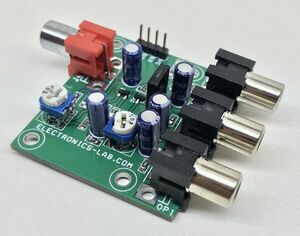
3 Channel Analog Video Splitter with Video Amplifier
"If you need to drive multiple video gadgets or monitors from a single video signal source then this board is the right choice for you. This is a 3-channel video splitter with an amplifier and the circuit is built using discrete components. Q2 and Q1 act as a signal amplifier, Q3 act as output driver, trimmer potentiometer PR1 is provided to adjust the input signal swing, PR2 Trimmer is provided to set the gain of the amplifier, D1 is the power LED. The operating power supply is 12V DC and it draws 100mA current. RCA Connector J4 is the Video signal input, RCA Connector J1, J2, J3 provide the outputs. The default gain of the circuit is 4." [...]

4 Legged Robot and Head Swing Robot
"Robot using Arduino Nano 33 BLE Camera Shield. I will introduce a robot that uses Arduino Nano 33 BLE OV7670 Camera Shield. A robot that swings its head using two servos and a four-legged robot that uses four servos. In addition to the target position, the movement speed can be specified as an instruction to the servo, so slow movement like a movie is easy. " [...]

Timelapse Camera Station
"Ever wanted to do time-lapse video but don't want to buy a expensive camera or use your iPhone? Raspberry Pi to save the day! Thanks for taking the time to view my project! I'm a big plant person so I have a bunch of plants and wanted to do some time lapses on them. Watch them grow and move around! I didn't have a nice camera that was capable of incremental photos." [...]
Pi Pico Balloon Tracker
"As you may know, my main hobby is flying weather balloons, using GPS/radio trackers to relay their position to the ground, so they can be tracked and hopefully recovered. Trackers minimally consist of a GPS receiver feeding the current position to a small computer, which in turn controls a radio transmitter to send that position to the ground. That position is then fed to a live map to aid chasing and recovering the flight. This essential role of the tracker computer is thus a simple one, and those making their own trackers can choose from a variety of microcontrollers chips and boards, for example Arduino boards, PIC microcontrollers or the BBC Microbit. Anything with a modest amount of code memory, data memory, processor power and I/O (serial, SPI etc depending on choice of GPS and radio) will do. A popular choice is the Raspberry Pi, which whilst a sledgehammer to crack a nut for tracking, does make it easy to add a camera." [...]

Watchy: The Hackable $50 Smartwatch
"This Arduino-compatible watch uses an ESP32 microcontroller and an e-ink display Like many of you, for the past year I’ve led a pretty static existence living and working in my apartment. But with the rollout of COVID-19 vaccinations, I can actually think of returning to a more ambulatory way of life. Which also means that I’m thinking about mobile devices for the first time in a long time, making it just the right moment to spot the recent release of the Watchy, an open-source, programmable, wireless-enabled wristwatch with a low-power display. Could I use it to create some personalized electronics for when I go back out and about? With its gray-tinted screen, Squarofumi’s Watchy inevitably conjures echoes of the Pebble smartwatch, which made a huge splash in 2012 when it raised over US $10 million on Kickstarter. Pebble ultimately had its lunch eaten by Apple and others, but Watchy is different in a few key respects: It is not trying to be a mass-market device." [...]
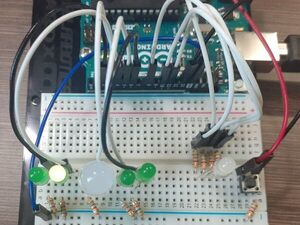
Arduino Arcade style LED Game
"Create a simple game from LED's Theaimofthegameistoclickonthebuttonwhen thebluelightisswitched ON. If you are successful, the RGB LED shows the colour red and the difficulty increases. On the other hand, if you fail, the difficulty decreases and the RGB displays the colour red. How It Works Each LED continuously switches between ON and OFF one at a time. A timer is added to delay this process and give the illusion of movement. When the blue LED is switched on and the button is clicked, we reduce the subsequent time for delays (This gives the illusion of the light moving faster) and the RGB LED displays the colour green." [...]

Quickstart IoT - Raspberry Pi Pico RP2040 with WiFi
"Connect your Raspberry Pi Pico CircuitPython project to the internet by adding an AirLift breakout board. The Adafruit AirLift is a breakout board that lets you use the ESP32 as a WiFi co-processor for a Pico. In this guide, you will wire up a Pico to an AirLift breakout and connect to the internet. Then, you'll learn how to fetch JSON and raw text data from the internet. Finally, an example is included for connecting your Pico to Adafruit IO, the Adafruit internet-of-things service, so you can interact with and visualize your project's data. Why use AirLift?" [...]
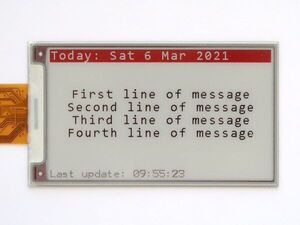
Remote e-Paper Messages Panel
"How to display messages on a remote screen? The project combines two technologies, e-paper screen and IoT, to solve this problem. How to display messages on a remote screen? The project combines two technologies to solve this problem. A remote device with an e-ink display connected to an IoT-capable board to receive and display the messages. A dashboard running on Node-RED to send the messages." [...]

N**** Style Home Info System
"A Home Info System (a.k.a Clock) Which displays the Time, Date, Humidity, Temperature, Barometric pressure and Moon Phase. I finally got rid of the dvd player that was only used for the time it displayed (the player itself stopped working years ago). But that left a large empty space especially noticeable when ever I looked over for time based answers. So I recently bought a Gixie clock that broke after a few hours so I decided to build a decent one myself. " [...]
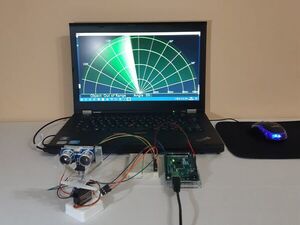
Arduino Radar with Simulink
"Simulink model development and integration with Arduino Mega 2560 for short-range radar detection system management. The development of the model have been performed in the Simulink working environment. Simulink is a MATLAB-based graphical programming environment for modeling, simulating and analyzing multi-domain dynamical systems. It has support for Arduino Mega 2560 digital development electronic board. The Simulink model itself is a replacement for the code written in the Arduino IDE integrated development environment. Additionally, MS windows software "Processing" was used to receive the data from the Arduino and to draw the radar image on the personal computer." [...]
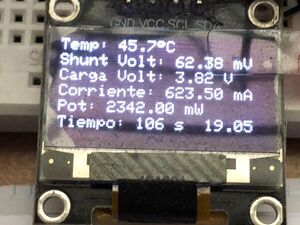
Battery capacity tester
"Battery tester using an ESP32, micro SD cards and Arduino This project is a datalogger to check the capacity of 18650 batteries by determining if they are in good condition or they must be discarded. The data that is logged in the sd card is: correct, power, voltage, LM35 temperature and execution time. In order to not discharge the battery without having conected all the components, there is a button to start the discharge of the batery. Once the button is pressend, the relay closes, the battery starts to discharge and the data is logged eery 5 seconds on the sd card. When the battery is bellow 2.8V, the relay opens to prevent over discharging the 18650 battery and also appears a new display showing the principal data adquired by the ESP32. " [...]

8086 microcode disassembled
"Recently I realised that, as part of his 8086 reverse-engineering series, Ken Shirriff had posted online a high resolution photograph of the 8086 die with the metal layer removed. This was something I have been looking for for some time, in order to extract and disassemble the 8086 microcode. I had previously found very high resolution photos of the die with the metal layer intact, but only half of the bits of the microcode ROM were readable. Ken also posted a high resolution photograph of the microcode ROM of the 8088, which is very similar but not identical. I was very curious to know what the differences were. I used bitract to extract the bits from the two main microcode ROMs, and also from the translation ROM which maps opcode bit patterns onto positions within the main microcode ROM." [...]
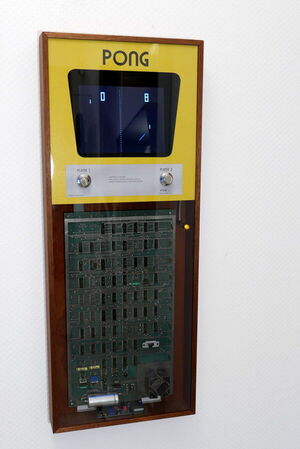
PONG in a picture frame
"Atari’s original PONG arcade game has an interesting design: No microprocessor or program; the whole game logic and signal generation are hard-wired from sixty-some TTL chips. So, when I got my hands on an original 1972 PONG circuit board, I wanted to build a playable cabinet around it, but also display the board with its surprisingly low-integration components. I decided to take my half-scale Asteroids idea a step further, and give center stage to the circuit board in a cabinet styled like a picture frame. The shallow depth of the frame (6 cm, a good 2") means that there is no room for a period-correct cathode ray tube; an 8" TFT is used instead. But I added a homebrew, FPGA-based video upscaler to simulate scan lines, horizontal blur and some phosphor afterglow, which makes the image look “right” to my eyes. While this project is complete and has turned out nicely, this web page is preliminary." [...]

Arduino Watering System
"Another intresting project to consider is the Arduino Watering System. Everyone has at least one plant in their room, kitchen or balcony. Is essential keep them fed and keep the soil moist, and if you don't have a good memory this simple project will help you a lot. Easy to understand and realize: you only need aa 5-9v pump, a soil moisture sensor (LM939 or v1.2), a relay module, and an Arduino Nano or UNO. Here is a complete kit to get you started easly. The soil moisture sensor value goes from 0 to 1023, when the sensor recive a value minor than 600, the relay turn on and the pump starts to irrigating the soil." [...]
Secção Videos
Videos interessantes.
That's all Folks!





